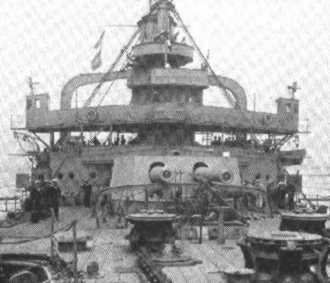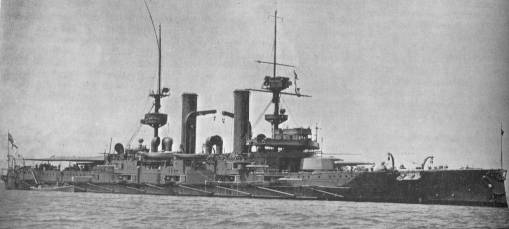|
The Chileans had chosen this caliber because the size and weight of the 10" (25.4 cm) ammunition allowed for a much simpler and more efficient ammunition supply system than was the case with the contemporary British 12" (30.5 cm) mountings. Neither the guns nor the mountings on these ships were identical to each other, a somewhat unusual affair in what were supposedly sister-ships, but explained by the fact that the Mark VI was built by Elswick while the Mark VII was manufactured by Vickers. Of wire wound construction, the principal difference between the two types was that the Mark VI had a cylindrical breech screw with four interruptions and unlocked after rotating 45 degrees while the Mark VII used a conventional Welin breech block with Vickers hydraulic or hand operation. A total of five guns of each mark were constructed. After Swiftsure was disarmed in the latter part of World War I, it was planned to reline the five guns to 9.2"(23.4 cm) and use them for railway artillery, but this conversion was never completed. After Triumph was sunk, it had been planned to similarly reline her spare gun to 9.2" (23.4 cm), but this also does not appear to have been completed. Nomenclature note: The 10"/40 (25.4 cm) Mark VIII designation was given to four 13.5" Mark III or Mark IIIF guns in the battleship Revenge which were relined to 10" (25.4 cm) for training purposes. The front of the chase was reduced in diameter to reduce the muzzle-heavy finished design. |

Bow of HMS Triumph |

HMS Swiftsure in 1908 |
| .
See photograph 6800 |